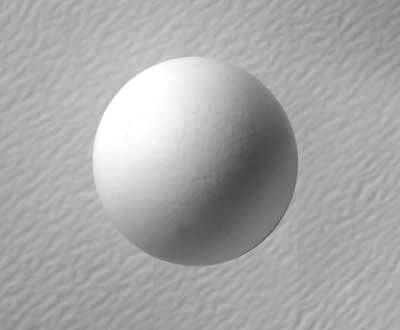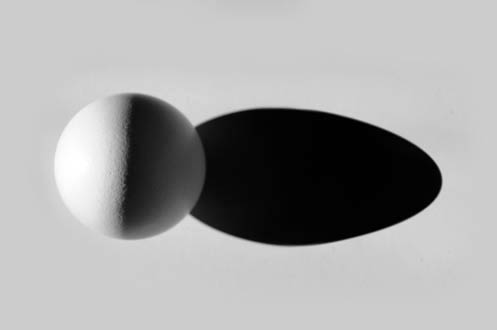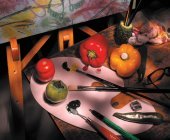|
Shadow in photographyElement of shadow in photography plays its role in a very subtle way. A shadow is created by the obstruction of an object, in the path of the light. Shadow is the element, which influence contrast and tonality. It has a major role in capturing a texture, as texture is visible only because of internal small sharp shadows within the subject. Shadow can be hard or soft. It is used to support a shape. It can provide some information about the actual shape. Below is an example of a photograph of an egg from top angle. The information illustrated in the photograph is so misleading that actually the egg looks like a table tennis ball!

When element of shadow is added, it gives some idea of the shape of an object and now "ball" looks like egg.

Depth is created in a photograph by a shadow. It shows the difference in contour of the subject. This element can also be used cleverly as a natural negative space, or it can be used to hide any element in the subject, which you do not want to show. In nude photography, this technique is very useful. Shadow plays major role in a low key photography. It becomes a dominating element, which is present on the subject, as well as on the background. However, the background can be a black back drop and not a real shadow, but the intention of this element remains undisturbed, as both, shadow or black back drop is giving the same message to create a low key picture.
Some times, shadow becomes a disturbing factor, especially in a product shoot. However, this opinion is purely subjective, but most of art directors will remove the shadow from a photograph of a product. In such case, the product looks like mysteriously suspended in the air. Shadow in photography can be internal and external. Texture is one example of internal shadow. Silhouetted image is actually an internal shadow of the entire subject. External shadow falls on background and tells about the distance between the main subject and background. If a model is close to a wall, his shadow will be partly hidden behind him. As he moves away from the wall, shadow will come out at a distance from the model. When shooting in studio with multiple lights, be sure not to record multiple shadows, as in nature, there is only one source of light and there has to be only one shadow. Multiple shadow is a good example of bad photography.
Return back to Elements of image
Learn more about:
|






